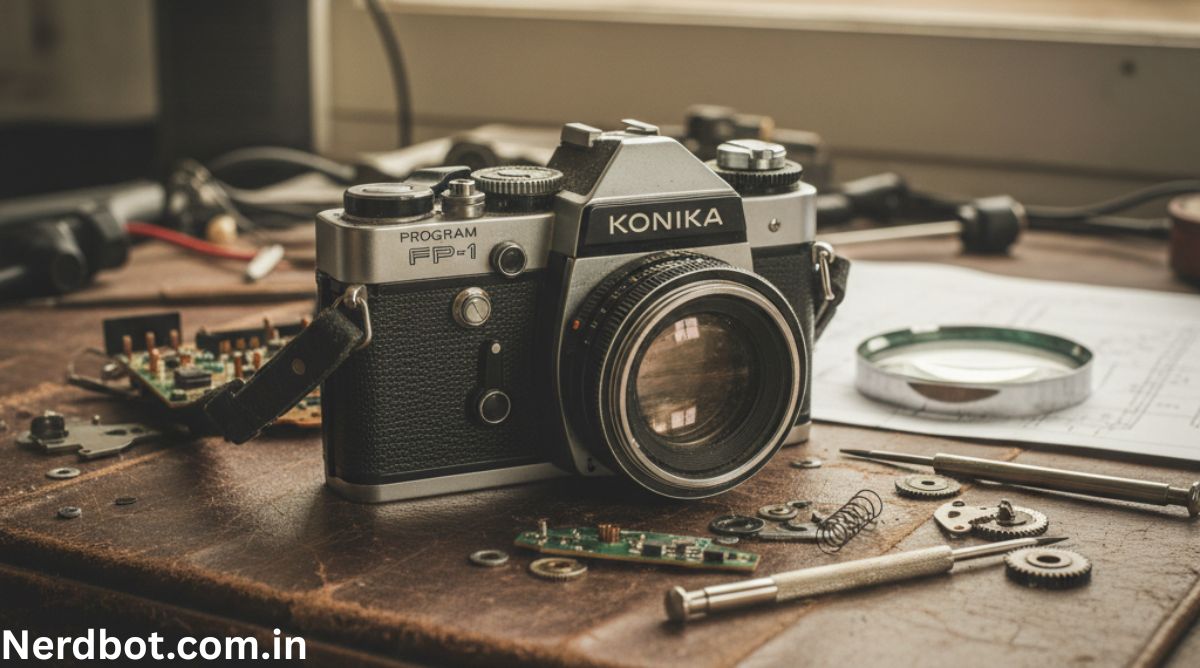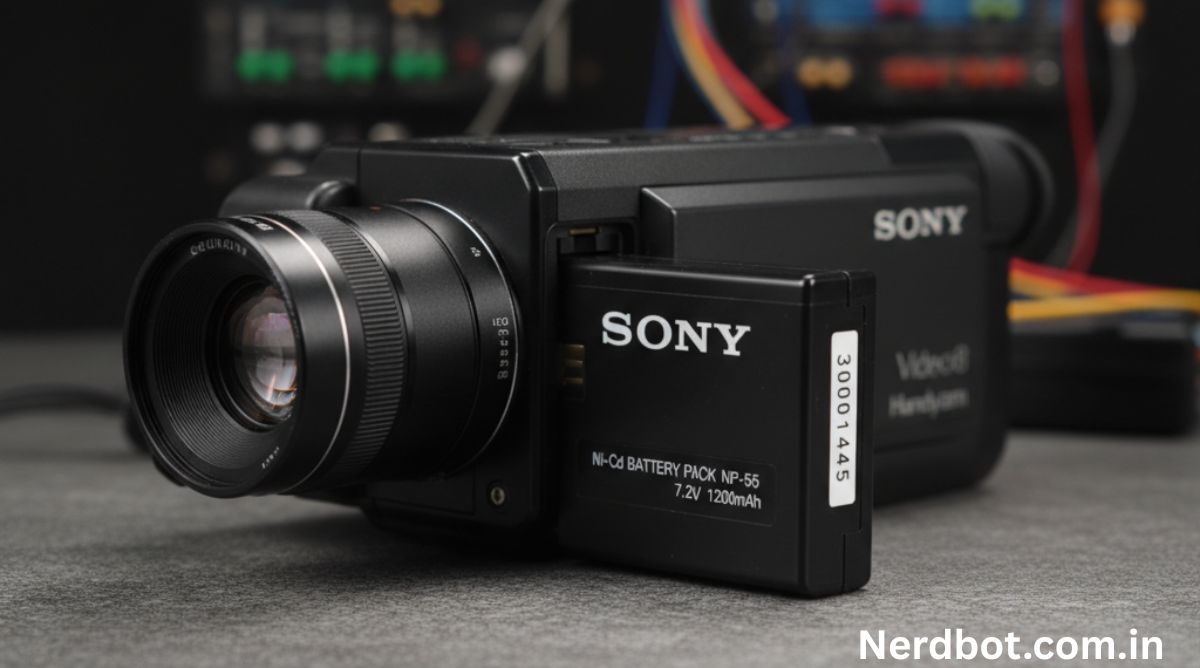The Konica FP1 Program is a compact, lightweight, and fully automatic 35mm single-lens reflex (SLR) camera that gained popularity in the early 1980s. Designed for beginners and enthusiasts, the FP1 Program was one of the first cameras in Konica’s lineup to incorporate complete automatic exposure, making photography more accessible to casual users. However, as with many vintage film cameras, issues such as automatic features not working have become common over time.
In this article, we’ll explore the history of the Konica FP1 Program, why its automatic features may stop functioning, how to troubleshoot the problem, and what enthusiasts can do today to keep this classic camera alive.
History of the Konica FP1 Program
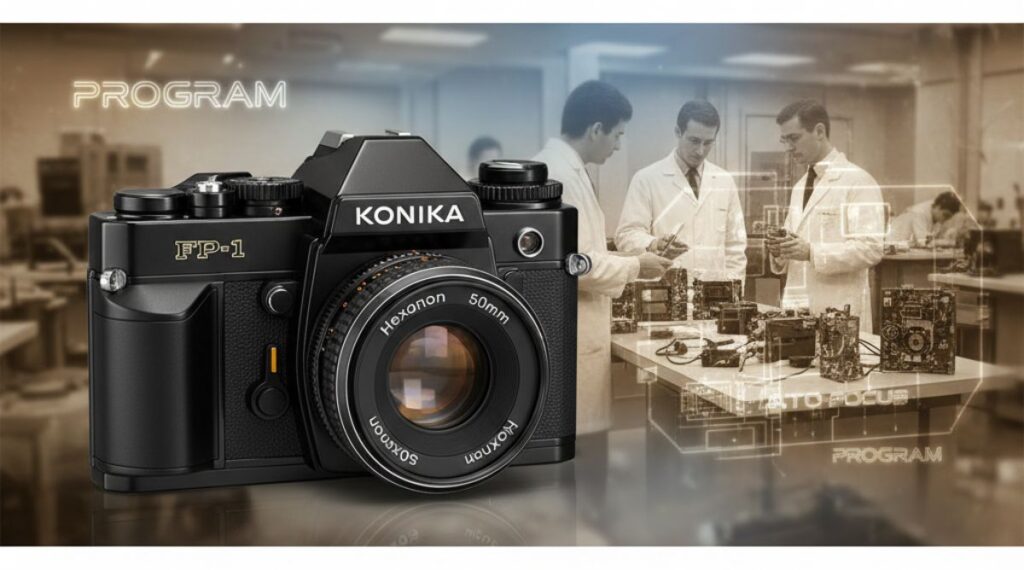
The Konica FP1 Program was introduced in 1981 as part of Konica’s efforts to create a camera that was simple yet powerful for everyday photography. It stood out because it offered fully automatic program mode, meaning the photographer only needed to focus and shoot while the camera handled shutter speed and aperture.
For reference, Konica was a major Japanese manufacturer of cameras, film, and optical equipment before it merged with Minolta in 2003 to form Konica Minolta. During the late 1970s and 1980s, Konica cameras were well regarded for their build quality and user-friendly designs.
The FP1 Program is a battery-dependent camera, relying heavily on its electronic circuits to control exposure. While this was advanced for its time, it also meant the camera would become vulnerable to electronic failures and battery issues as it aged.
Key Features of the Konica FP1 Program
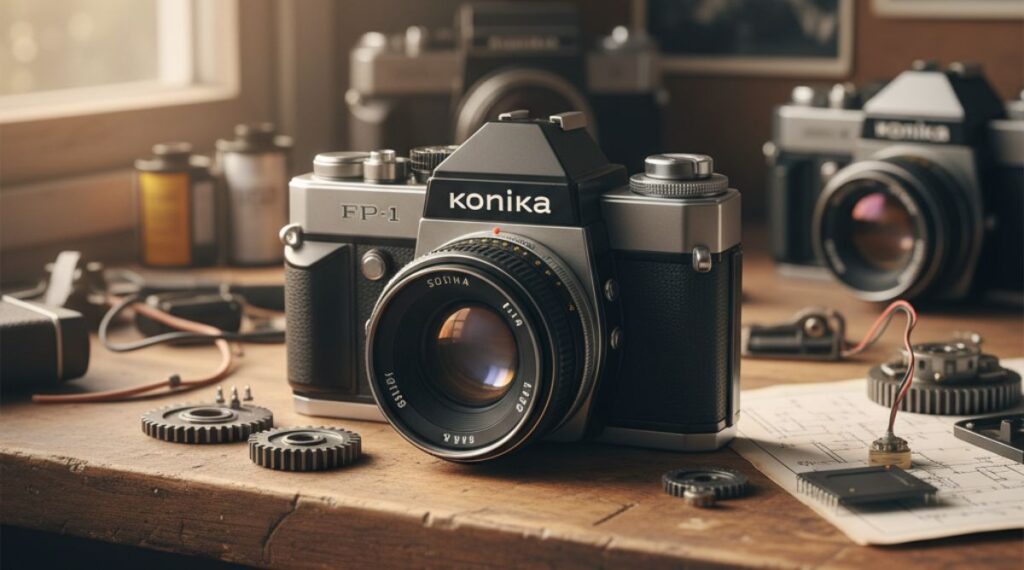
Before diving into the problems, it’s useful to understand the major features of this camera:
- Programmed Auto Exposure – The FP1 was designed to handle both aperture and shutter speed automatically. Unlike manual SLRs, it had no manual override, appealing to casual users.
- Compact and Lightweight Build – Made of durable polycarbonate, it was portable and easy to carry.
- Konica AR Lens Mount – Compatible with a wide range of Konica AR lenses, providing versatility.
- LED Viewfinder Display – Simple indicators to confirm exposure settings and focus.
- Battery Dependency – The camera required batteries (typically two LR44 or SR44 cells) to function.
While these features made the camera beginner-friendly, they also introduced the potential for failures if the automatic system stopped working.
Common Issues with Konica FP1 Program Automatic Features
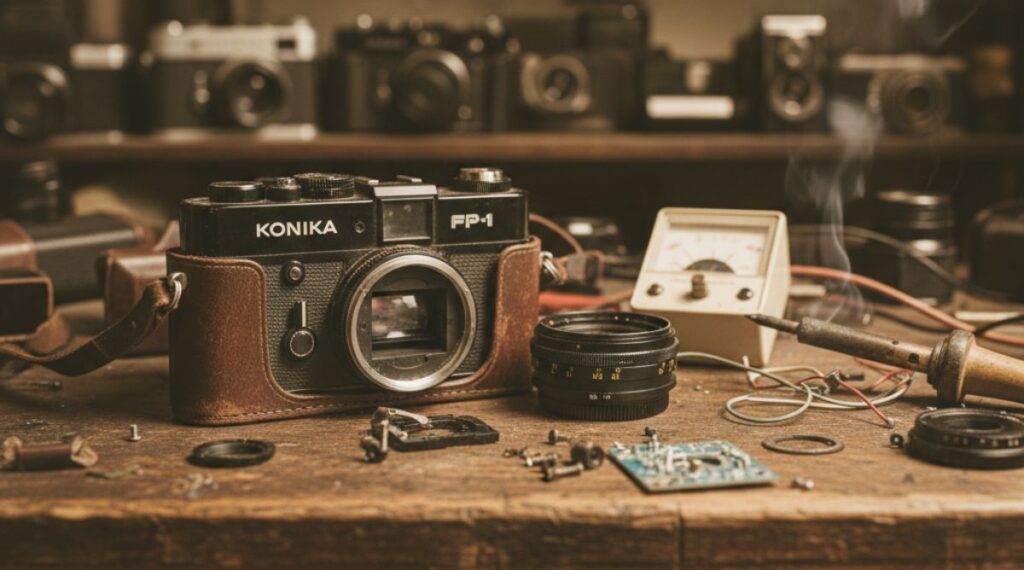
When users report that the automatic features are not working, the issue often falls into one of the following categories:
1. Battery-Related Problems
Since the FP1 Program depends entirely on battery power, weak or dead batteries are the most common cause of automatic function failure. If the camera does not power on or the shutter doesn’t fire, checking the batteries is the first step.
2. Corroded Battery Contacts
Over time, old batteries may leak, leaving corrosion inside the battery compartment. This prevents proper electrical flow, causing the camera’s auto-exposure system to fail.
3. Electronic Circuit Failure
Being an early electronic SLR, the FP1 used fragile circuitry. Aging components, such as capacitors and wiring, may break down after decades, leading to exposure meter malfunctions.
4. Shutter Problems
The shutter mechanism is electronically controlled. If the shutter doesn’t fire or stays stuck, the automatic exposure cannot function properly.
5. Lens Mount or Aperture Lever Issues
The FP1 relies on mechanical levers inside the AR lens mount to communicate aperture settings with the body. Dust, dirt, or mechanical wear can cause miscommunication, leading to exposure problems.
6. Viewfinder Indicator Malfunctions
Sometimes the camera appears to fail when in reality the LED indicators in the viewfinder stop lighting up. This can give a false impression that the automatic system isn’t working.
Troubleshooting the Konica FP1 Program Automatic Features
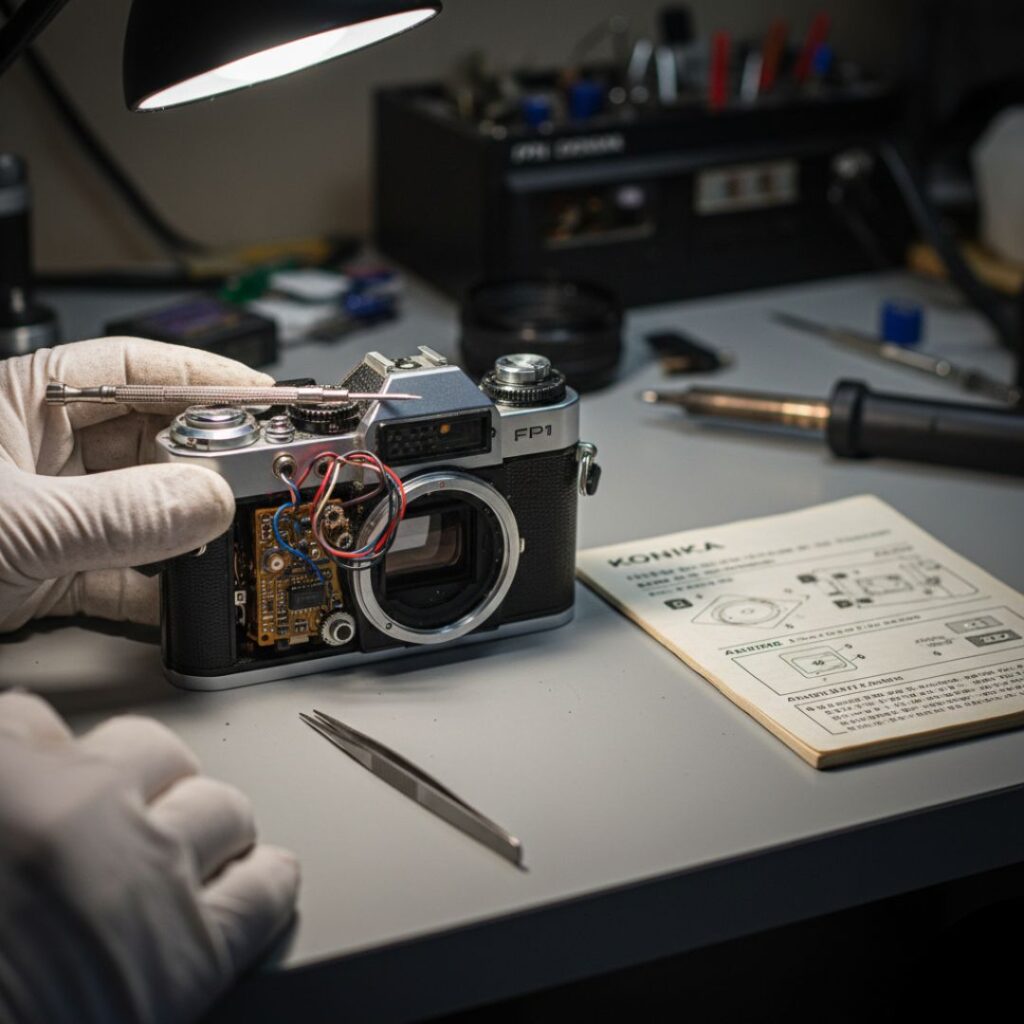
If you own a Konica FP1 Program and are facing issues, here are some troubleshooting steps you can try:
Step 1: Replace the Batteries
- Use fresh SR44 or LR44 batteries.
- Ensure they are inserted with the correct polarity.
- Check that the battery cover closes securely.
Step 2: Clean Battery Contacts
- Use a cotton swab with isopropyl alcohol or a pencil eraser to clean corroded contacts.
- Avoid scraping too hard, as this may damage the contacts.
Step 3: Test the Shutter
- Advance the film lever and press the shutter button.
- Listen for a click – if the shutter does not fire, it could be a sign of mechanical or electrical failure.
Step 4: Check the Lens Mount
- Remove the lens and inspect the aperture lever.
- Make sure the lever moves smoothly and isn’t jammed.
Step 5: Test Viewfinder LEDs
- Point the camera at a bright surface and half-press the shutter button.
- If no LEDs appear, the meter circuit may be faulty.
Step 6: Professional Repair
If these steps do not solve the issue, a professional repair service specializing in vintage film cameras may be required.
Why Automatic Features Fail Over Time
The aging process plays a major role in why many FP1 Program cameras no longer function properly. Unlike purely mechanical cameras such as the Nikon FM, the FP1 relies almost entirely on its electronics.
Some contributing factors include:
- Battery leakage damaging circuits
- Moisture exposure leading to rust or corrosion
- Degraded capacitors in the electronic board
- Wear and tear on the shutter mechanism
These issues are typical for 40+ year-old electronic cameras, making functional FP1s rarer every year.
Collectibility and Value Today
The Konica FP1 Program is considered a beginner-friendly collectible camera. While it doesn’t have the cult following of cameras like the Canon AE-1, it is still sought after by collectors and Konica enthusiasts.
Its value depends heavily on condition:
- Fully working models with clean optics can sell for around $100–$150.
- Non-working models are often sold for parts, fetching $20–$40.
Because of its limited manual controls, it is less popular among serious film shooters, but its nostalgic charm keeps it relevant.
Alternatives to the Konica FP1 Program
For those who want a vintage film camera with greater reliability and manual control, alternatives include:
- Konica Autoreflex series – Earlier Konica SLRs with manual exposure options.
- Pentax K1000 – Famous student camera, fully mechanical.
- Nikon FM/FE – Durable, widely supported, and versatile.
- Canon AE-1 Program – A close competitor from the same era.
These alternatives tend to offer more flexibility while still being affordable.
Preserving the Konica FP1 Program for the Future
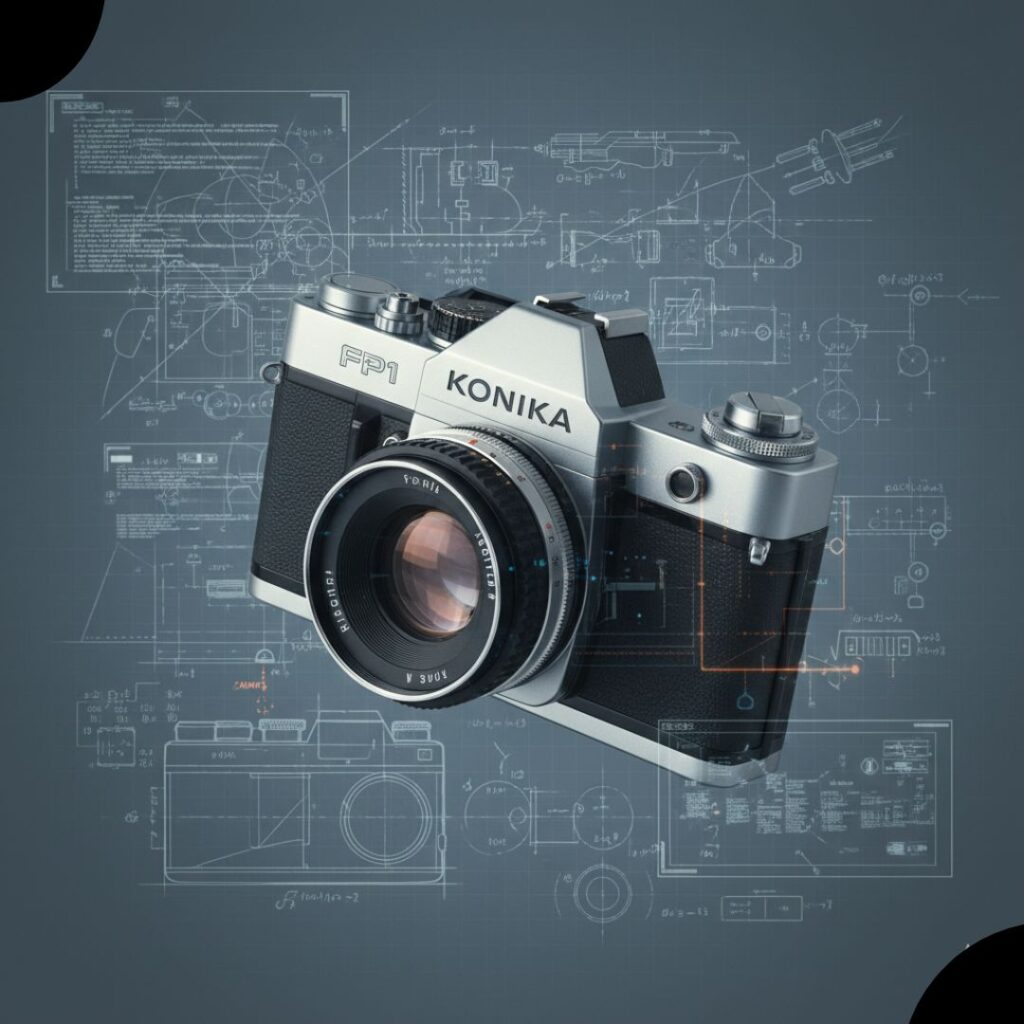
If you own one of these cameras, here are some tips to preserve it:
- Remove batteries when not in use to avoid leakage.
- Store in a cool, dry place to prevent fungus growth in lenses.
- Exercise the shutter occasionally to keep the mechanism lubricated.
- Clean lens mounts and electrical contacts periodically.
For camera enthusiasts, preservation is key to keeping this piece of photographic history alive.
Conclusion
The Konica FP1 Program represents an important step in camera history, where manufacturers began prioritizing automation for casual users. However, its reliance on electronics means many units today suffer from automatic features not working.
Through troubleshooting steps such as battery replacement, cleaning contacts, and testing the shutter, some issues can be resolved. But for deeper electronic failures, professional servicing may be required.
For collectors, the FP1 Program remains a charming piece of 1980s photography, even if its automatic features sometimes fail. Whether used as a display item or restored to working condition, it serves as a reminder of Konica’s innovative approach in making photography accessible to everyone.






